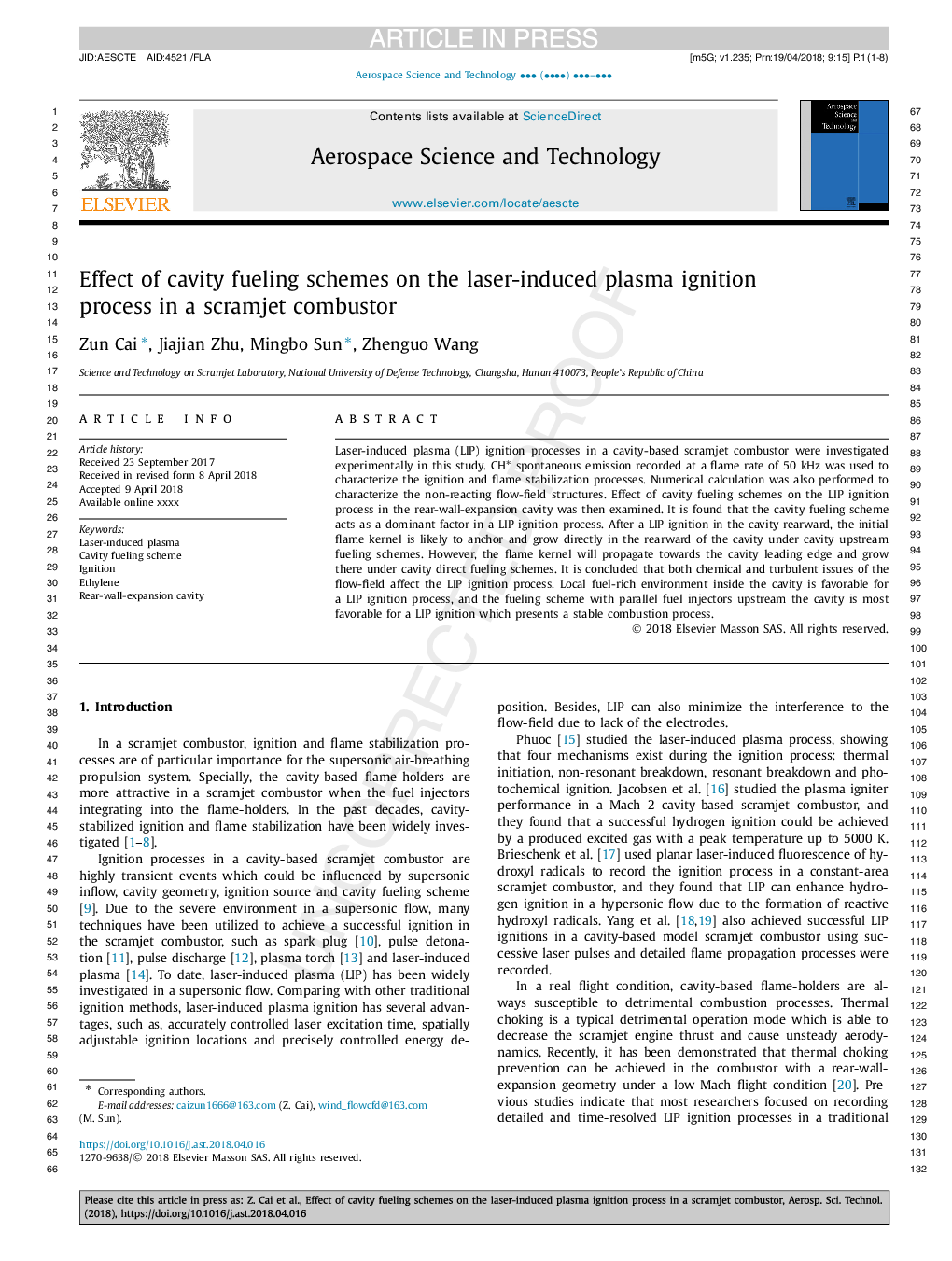| Article ID | Journal | Published Year | Pages | File Type |
|---|---|---|---|---|
| 8057491 | Aerospace Science and Technology | 2018 | 8 Pages |
Abstract
Laser-induced plasma (LIP) ignition processes in a cavity-based scramjet combustor were investigated experimentally in this study. CHâ spontaneous emission recorded at a flame rate of 50 kHz was used to characterize the ignition and flame stabilization processes. Numerical calculation was also performed to characterize the non-reacting flow-field structures. Effect of cavity fueling schemes on the LIP ignition process in the rear-wall-expansion cavity was then examined. It is found that the cavity fueling scheme acts as a dominant factor in a LIP ignition process. After a LIP ignition in the cavity rearward, the initial flame kernel is likely to anchor and grow directly in the rearward of the cavity under cavity upstream fueling schemes. However, the flame kernel will propagate towards the cavity leading edge and grow there under cavity direct fueling schemes. It is concluded that both chemical and turbulent issues of the flow-field affect the LIP ignition process. Local fuel-rich environment inside the cavity is favorable for a LIP ignition process, and the fueling scheme with parallel fuel injectors upstream the cavity is most favorable for a LIP ignition which presents a stable combustion process.
Keywords
Related Topics
Physical Sciences and Engineering
Engineering
Aerospace Engineering
Authors
Zun Cai, Jiajian Zhu, Mingbo Sun, Zhenguo Wang,
